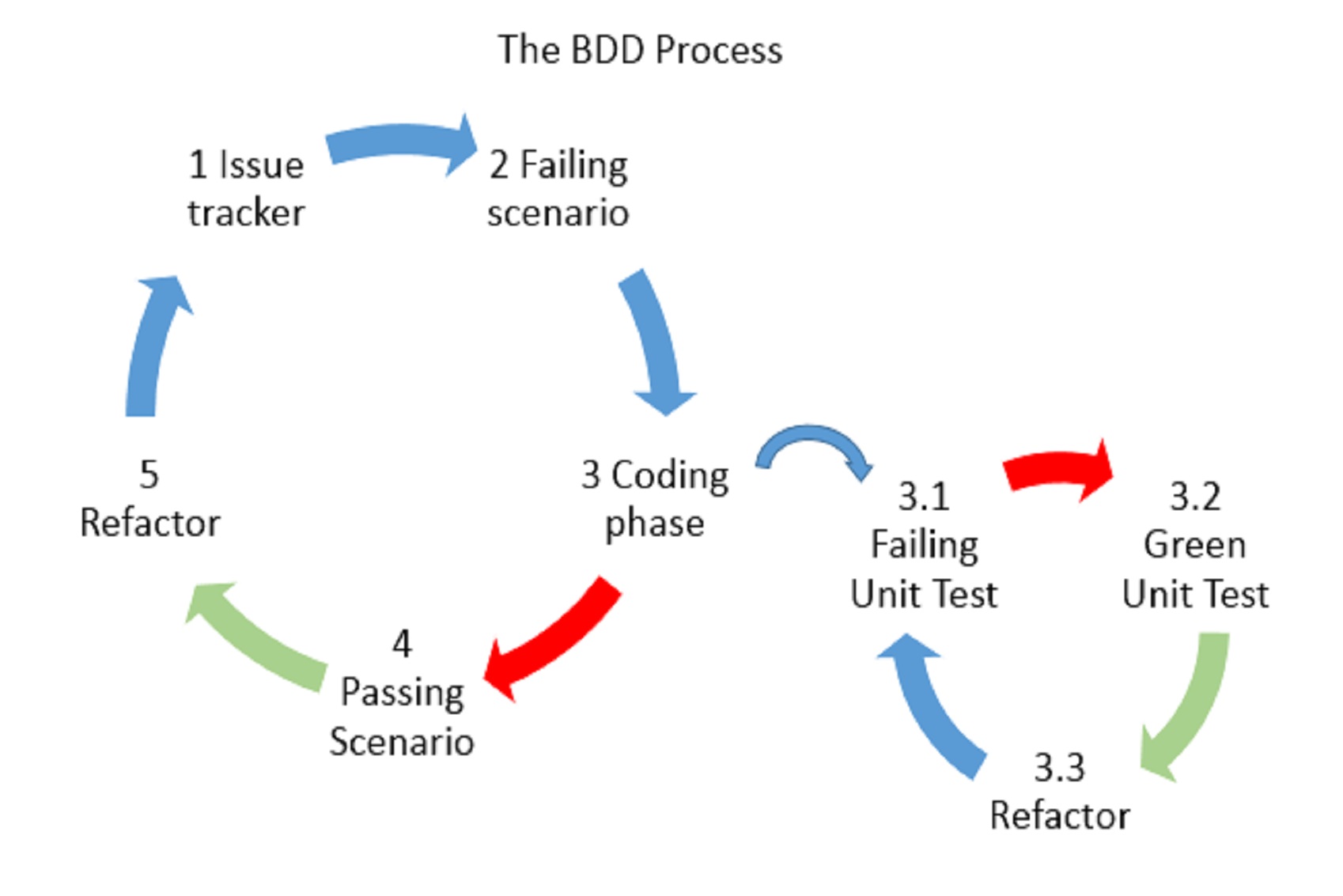Behaviour Driven Development (BDD) Approach

Behaviour Driven Development (BDD) is a synthesis and refinement of practices stemming from Test Driven Development and Acceptance Test Driven Development, or in other words, it’s a software development methodology in which an application is specified and designed by describing how its behaviour should appear to an outside observer. BDD is emerged from Test Driven Development (TDD), which is mainly focused on the repetition of a very short development cycle. BDD differs TDD by being written in a shared language, which improves communication between tech and non-tech teams and stakeholders. In both development approaches, tests are written ahead of the code, but in BDD, tests are more user-focused and based on the system’s behaviour.
Why we require BDD?
- High visibility: By using a language understood by all, everyone gets strong visibility into the project’s progression.
- The software design follows business value: BDD puts great importance on the business value and needs.
- Strong collaboration: Collaboration between Business stakeholders, Business Analysts, QA Team and developers.
- The ubiquitous language: The ubiquitous language is understandable by all the members of the team.
- Software development meets user need: By focusing on the business’s needs, you get satisfied users, and that implies a happy business.
- Efficient Control on Development: All development work can be traced back directly to business objectives.
- Efficient prioritization: Business-critical features are delivered first.
- Lower costs: By improving the quality of the code, you are basically reducing costs of maintenance and minimizing the project’s risks.
BDD & Test Automation Methodology
We believe that the role of test automation is of primary importance to the success of any BDD initiative. Testers must write tests that verify the behaviour of the system or product being built. The test results generated are in the form of success stories of the features and hence are more readable by the non-technical user as well. For Behaviour Driven Development to be successful it becomes essential to identify and verify only those behaviours that contribute directly to business outcomes.
In an Automated test procedure, software developers and stakeholders collaborate to write automated tests that express the outcome that the stakeholder wants. In this sense, a key point in BDD procedure is the ubiquitous language. This is a semi-formal language that is shared by all members of the software project becoming a vehicle for the communication between all the different roles. For Example, the Gherkin language, is formed by specific words such as: Feature, Background, Scenario, Given, When, Then, and, But etc. The physical implementation of the ubiquitous language is the feature file. This is a standard wherein, using the mentioned words, test cases are written forming sentences. The simplest structure format is like this.
Feature: Specification of the test case.
Scenario: Test case. Each scenario contains steps.
Given: To set up the context or the preconditions where the scenario happens.
When: To interact with the system somehow. Action to do.
Then: To check that the outcome of that interaction was what we expected.
A feature is a place to write the summary documentation about the test suite that follow. A scenario expresses the behaviour that we want, each feature can contain several scenarios. Each scenario is a single concrete example of how the system should behave in a situation. Finally, each scenario is described by sentences using the mentioned key words. It is important to mention that sentences can include input variables to describe test situations or expected.
BDD Frameworks
There are various frameworks we use for Behaviour-Driven Development Test Automation.
- Cucumber: Cucumber is a software tool that computer programmers use for testing other software. It runs automated acceptance tests written in a behaviour-driven development (BDD) style. Cucumber is written in the Ruby programming language.
- SpecFlow: This is called as Cucumber for.NET. SpecFlow acceptance tests follow the BDD paradigm: define specifications using examples understandable to business users as well as developers and testers. It’s integrates with Visual Studio.
- Jasmine: Jasmine is a behaviour-driven development framework for testing JavaScript code. It does not depend on any other JavaScript frameworks.
- Jdave: JDave is a BDD framework for Java.
How do we solve the problem of buggy software being delivered to customers? By making sure that testing is not seen as something only the developers care about. Describing and understanding the needs of a system has a ton of benefits beyond code correctness, establishing inter-departmental dialog and making sure all stakeholders’ concerns are met. Using BDD to understand these needs from the start and testing external business behaviours that the entire team cares about, that is a great way to ensure a quality project.
Kefi Tech Solutions Pvt Ltd is a multidimensional IT company. Kefi brings competitiveness with quality in IT outsourcing service. We are a group of passionate and experienced professionals who have come together with a common goal.

